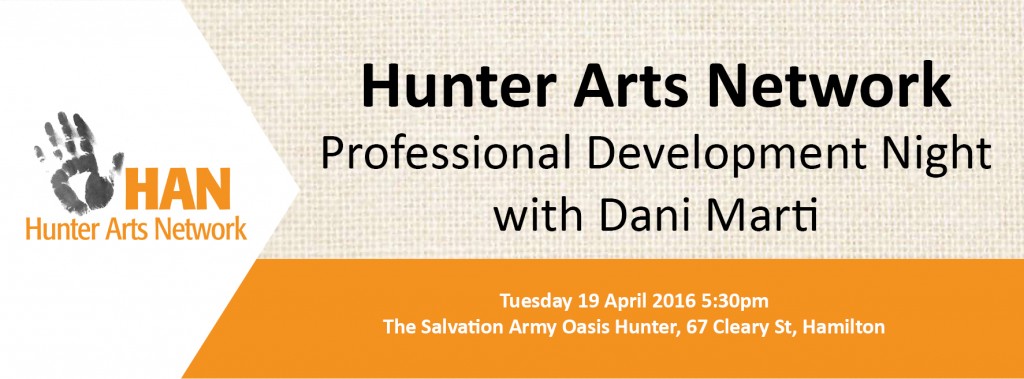Tuesday 19 April 2016
Conference Room, The Salvation Army Oasis Hunter, 67 Cleary St, Hamilton
Tea, coffee, juice & nibbles from 5.30pm
Starts 6pm
$10 for members (group memberships can have two attend)
$20 non members
Registration required – email publiclity@hunterartsnetwork.org by 12 April 2016
Dani Marti will be speaking about his woven constructions/sculptures/installations
About Dani Marti
Dani Marti was born 1963 Barcelona, Spain. Lives and works Sydney, Australia and Glasgow, Scotland. Marti works across video, installation and public art. His unorthodox woven and filmic works turns to wider notions of portraiture and sexuality in modernism, minimalism, and geometric abstraction. Oscillating between hopefulness and failure, Dani Marti’s work is hinged to a representational paradox. For on the one hand it presupposes belief in the act of portrayal, and on the other hand it tacitly admits portraiture’s inevitable failure to accurately capture. His relation to his subject is consistently fixed: an obsessive, laborious, and often desire-driven attempt to represent something of his subject that is beyond appearances. Something of a deep-rooted lust between him and his subject, something of an essence, something, in other words, beyond surface. But it is surface—quite literally—that we as viewers are left with in Marti’s work, nothing objectively closer to ‘the real’ other than what one chooses to see and read into it. Marti’s work is thus an explicit reminder that viewer subjectivity is the only place where the portrait can truly be generated. His gestures toward it are merely our starting points. Visit http://danimarti.com/
“My practice is stimulated by what I perceive as challenges within the act of portrayal. I am fascinated by what lies behind the surface of the subject as an essence to be grasped or sought after through attempting to re-present it. The dialectic between the possibility and simultaneous hopelessness of this endeavour emerges in the abstraction of large-scale woven works, and videos that borrow from the language of documentary. The formal polarity that exists between these ways of working is the terrain on which I am able to examine how in approaching the physical and mediated surface of information, alternate readings may be generated by the viewer.”

